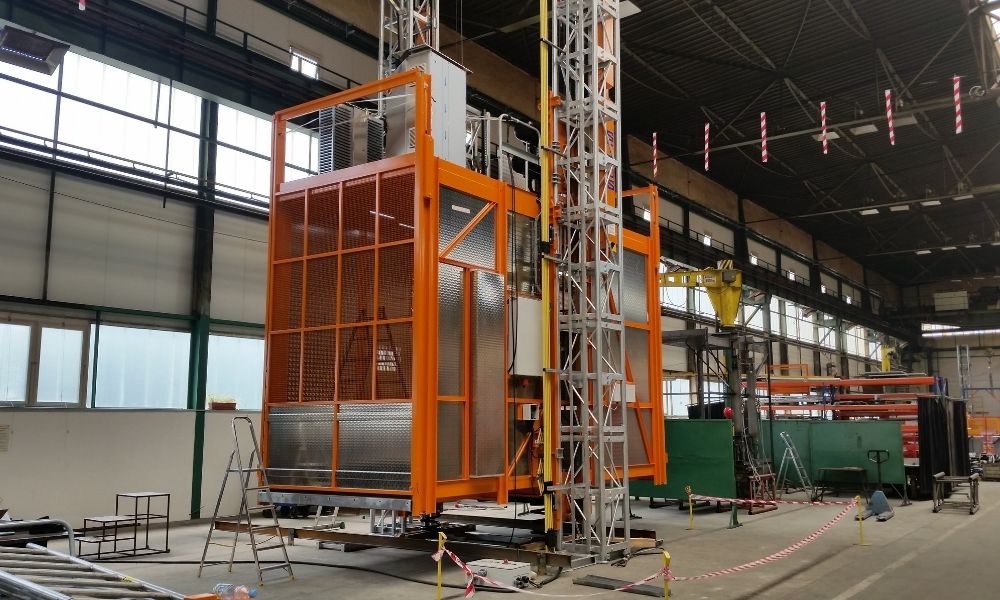Construction hoists and, to a lesser extent, transport platforms are widely used in the construction industry for the purpose of vertically transporting equipment and personnel. In doing so, construction hoists allow construction work to be performed at a wide range of different heights quickly, economically, and safely compared to conventional methods like telehandlers and cranes. Most construction hoists have a capacity in the range of 5,000 to 7,000lbs and are normally 5’ wide x 12 to 15’ long, but there may be some instances in which you need to lift loads that outweigh the maximum capacity of a conventional construction hoist or are oversized and too large for a conventional hoist. In such an instance, twin mast construction hoists and transport platforms provide a welcome alternative. To learn more about this helpful type of equipment and the load capacity of a twin mast, continue reading.
What Is a Twin Mast Hoist?
Before we get into the specific details of a twin mast hoist’s capabilities, let’s discuss what exactly a twin mast hoist is. Traditionally, construction hoists have one single tower, and the unit(s) are propelled up and down by power drive units. A twin mast hoist, however, consists of two synchronized motor decks on two towers. This can optionally be combined with “side cars” of standard construction hoists or, in some applications, two side-by-side twin mast hoists.
What Is the Load Capacity of a Twin Mast?
Because twin mast hoists consist of two motor decks and two towers instead of a single tower and motor, twin masts can generally lift substantially larger loads than traditional mast platforms. Some manufacturers make units that lift over 15,000 lbs. and are up to 12’ tall, 14’ wide, and 25’ long!
If you were to try to use a conventional hoist to lift over its rated load or lift equipment on the roof, thereby surpassing the manufacturer’s suggested load capacities and constraints, you risk damaging the equipment and putting the safety of the construction workers on your site at risk. In most states, this is specifically prohibited and illegal. Fortunately, twin mast hoists can have a much larger load capacity and size. That way, if you need to lift heavier loads throughout your project, you can do so safely and efficiently.
Small Site, Huge Building?
Many twin mast hoists are being deployed for the simple reason that construction sites are shrinking while tower heights are increasing. That is to say, the on-site tower crane is already working overtime, there is no room (or budget!) for a giant mobile to lift materials, or it simply doesn’t work for the site safety and logistics plans to lift with conventional hoists.
Many sites throughout the US—from large factories in Nevada to oil refineries and ports on the west coast in California or British Columbia to massive commercial office buildings in New York City—are using twin mast hoists and elevators. Often, they are deployed specifically to lift oversized curtain wall systems. Sometimes, they are used to lift regularly needed oversized equipment in instances where a crane just won’t do. We have seen a twin mast hoist be used a few times because a manufacturer of products refuses to permit crane-lifting or will otherwise void a warranty.
At UCEL, we offer high standard twin mast hoists that have been manufactured using the most durable and technologically advanced materials on the market. By taking advantage of twin-mast technology, our equipment has extremely high load capacities while still completely complying with all safety codes. In addition, our platforms come in a wide range of sizes to best suit your specific application. To learn more about our robust equipment options from one of our trusted advisers, contact us today.
